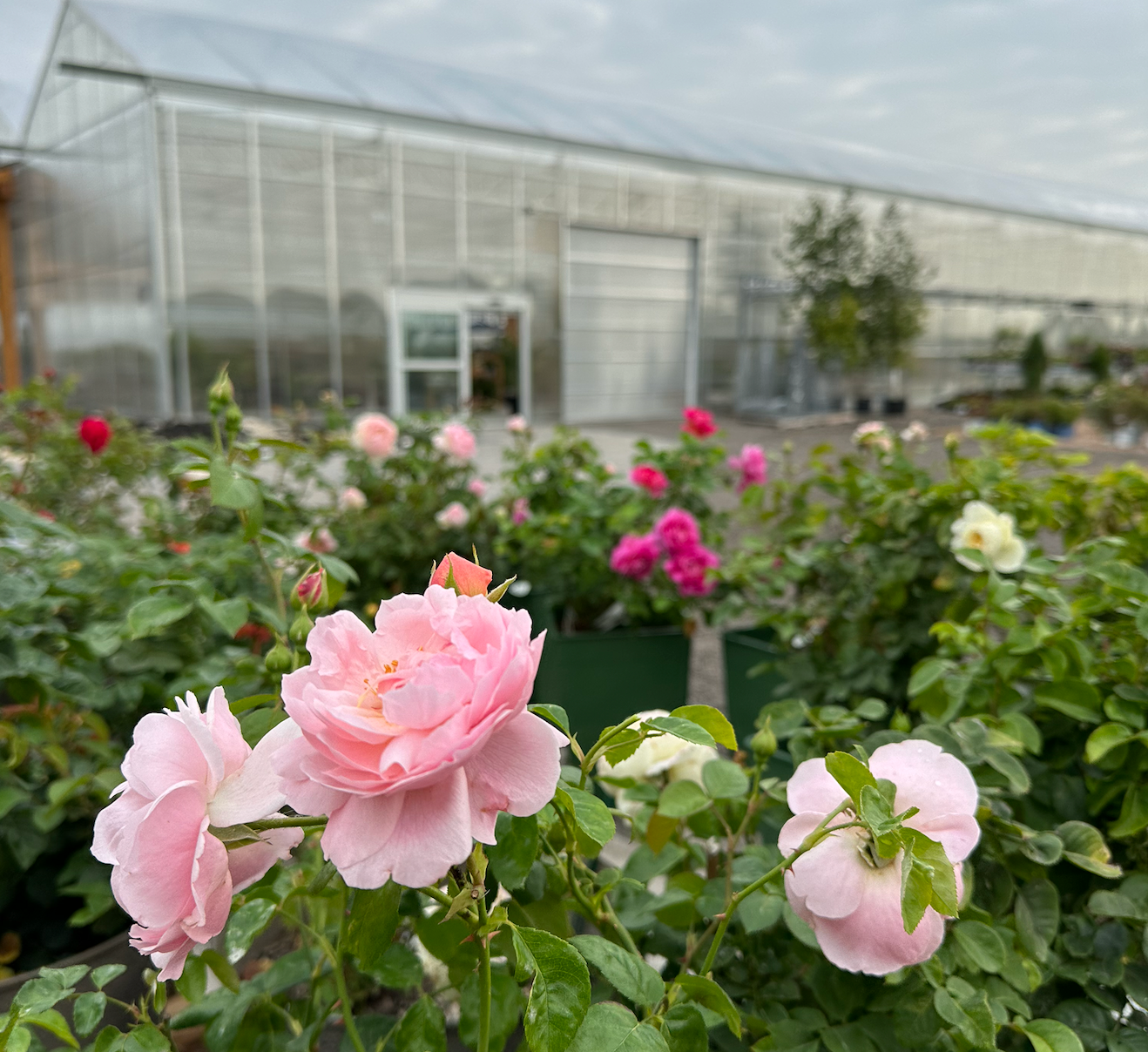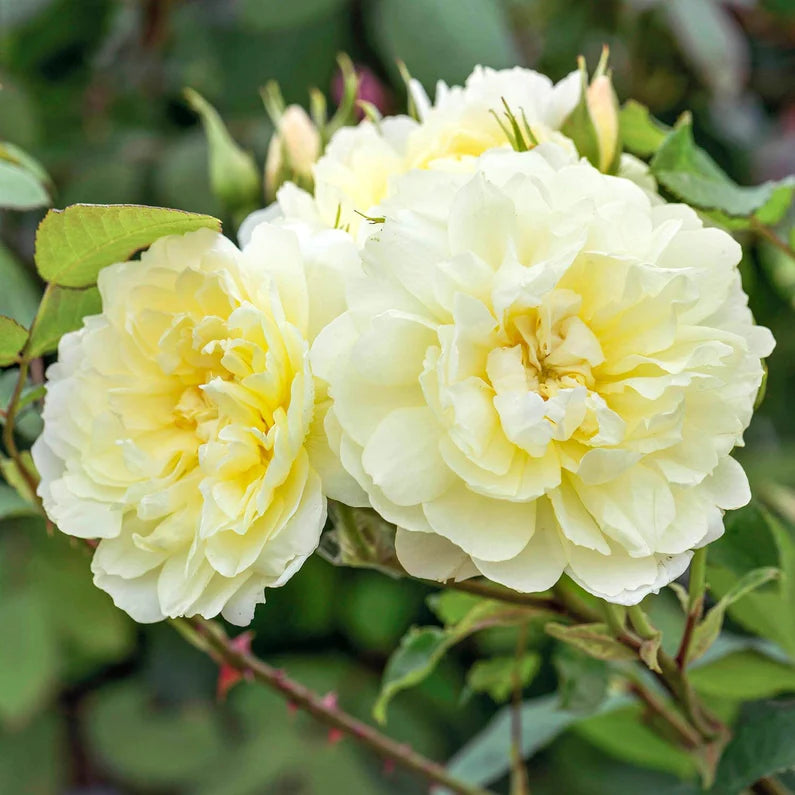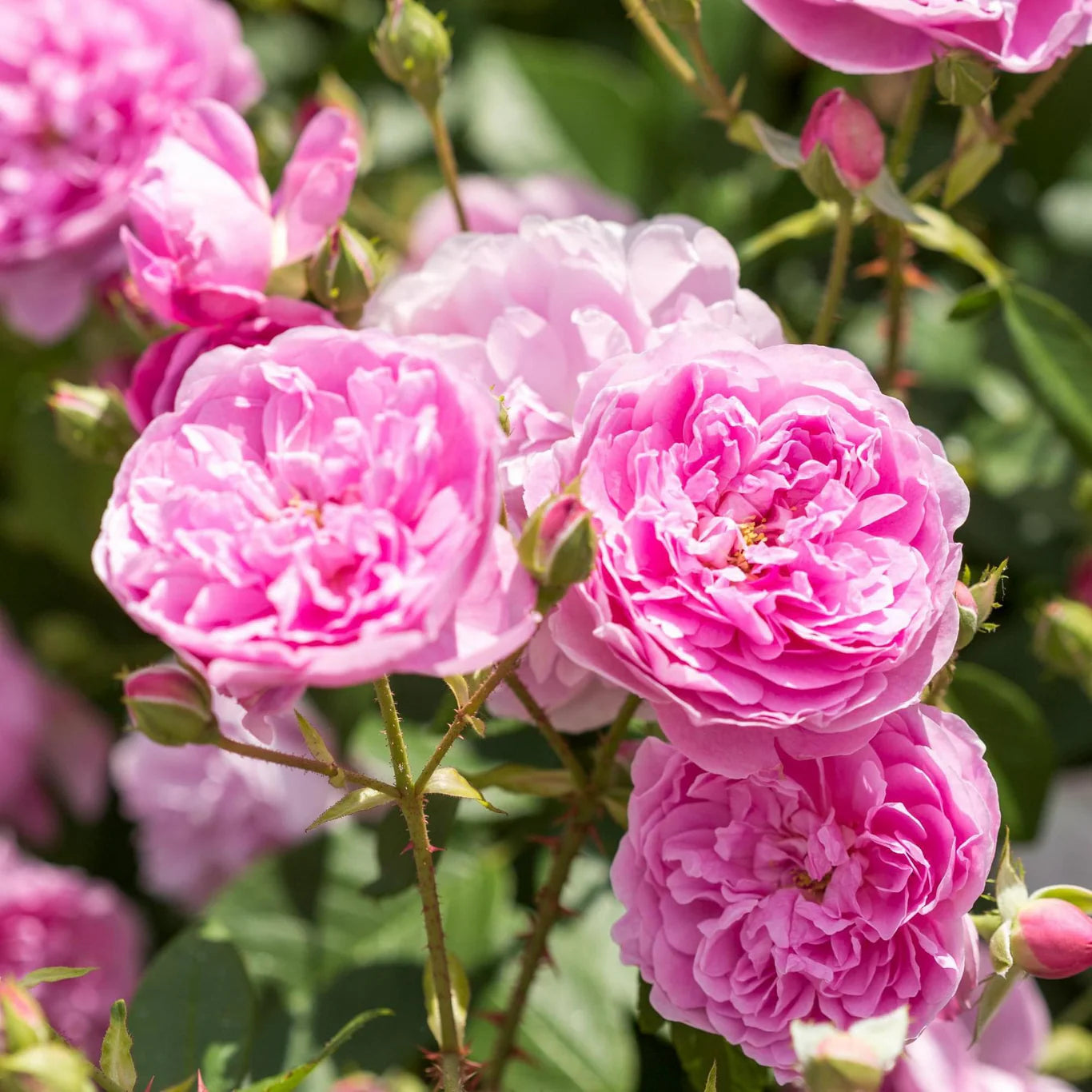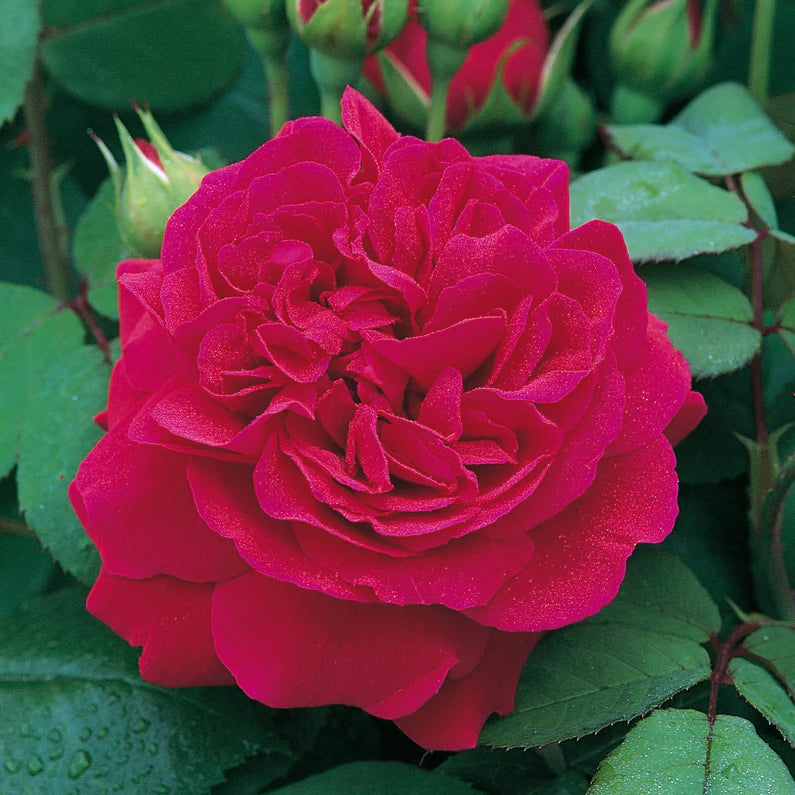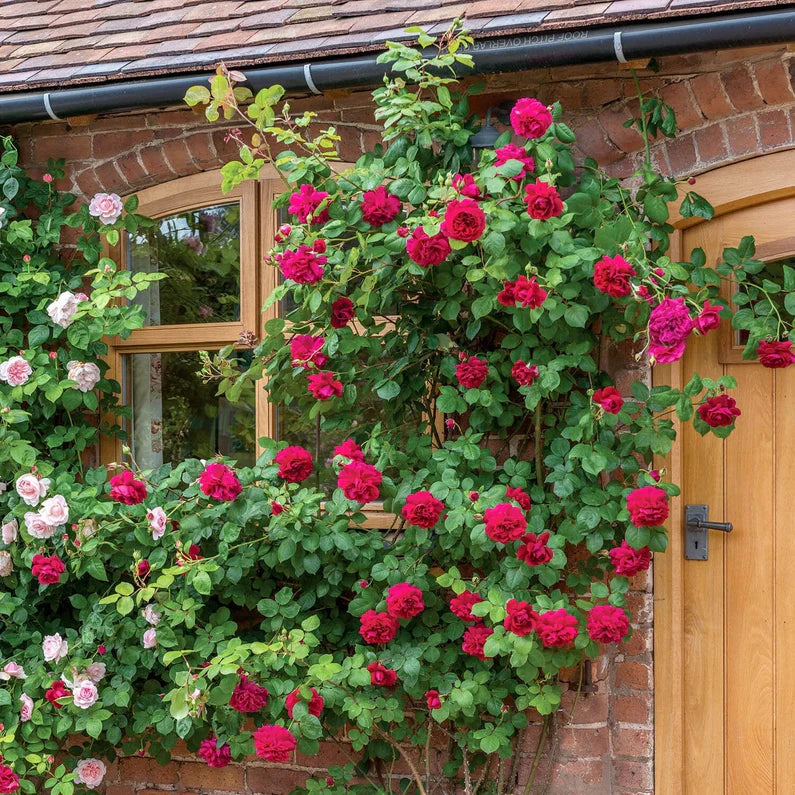
Little Leaf Coffee & Tea
Open Tuesday to Saturday from 10 AM to 4 PM
Enjoy a specialty coffee or tea while you explore the garden center! Plus, we have fresh baked goods delivered every Friday morning for the weekend—available while supplies last.
24 products
24 products
Sort by:
David Austin Roses
Bears pretty, lightly scented, pale yellow blooms, fading almost to cream. The many delicately frilled petals are arranged around a button eye. It forms a sturdy, quite upright shrub with glossy foliage. Named after the character in Shakespeare's Cymbeline. David Austin, 2016.
David Austin Roses were not developed for Zone 3. BUT it is possible to have success here in Manitoba by following a few key tips.
Choose a location that is not in line with strong north winds
Plant the crown (this is where the roots end and the woody shrub begins) of your rose 6”-12” below the surface of the soil. As your shrub will be in full leaf at time of purchase clean off leaves that will get buried.
In the fall you will need to cover with a deep layer of mulch. Wood mulch, straw, leaves or a combination of all. Use a burlap tarp (Not Plastic) to cover and hold down with rocks or stakes. This will ensure the mulch is not blown away. A full wheelbarrow or more per rose is not out of the question. Throughout the winter direct your snow clearing efforts to cover your roses as well. The more insulation the better.
Don’t remove the tarp and mulch until night temperatures are consistently hovering about zero to +3 with no threat of deep freeze, as we sometimes see in April.
We hope you enjoy growing your David Austin Rose.
Bears flowers of the most perfect formation – shallow cups of the purest mid pink. They flower very freely from early summer until well into the autumn and have a strong, pure Old Rose fragrance. It has an excellent bushy habit with upright, vigorous growth. Maturing into an attractively rounded shrub; it flowers almost to the ground.
Named after the Royal Horticultural Society’s garden in Yorkshire, to celebrate the 200th anniversary of the society’s formation.
Zone 4
|
Bloom Size |
Medium |
|
Bloom Colour |
Mid. Pink |
|
Fragrance |
Strong Old Tea |
|
Year of Introduction |
1983 |
|
Size |
4' x 3' |
|
Family Shrub |
Root Grafted Dr. Heuy |
|
Flowering |
Repeat Bloomer |
|
Petal Count |
120 |
David Austin Roses were not developed for Zone 3. BUT ,it is possible to have success here in Manitoba by following a few key tips.
Choose a location that is not in line with strong north winds
Plant the crown (this is where the roots end and the woody shrub begins) of your rose 6”-12” below the surface of the soil. As your shrub will be in full leaf at time of purchase you can clean off leaves that will get buried if you like.
In the fall you will need to cover with a deep layer of mulch. Wood mulch, straw, leaves or a combination of all. Use a burlap tarp (Not Plastic) to cover and hold down with rocks or stakes. This will ensure the mulch is not blown away. A full wheelbarrow or more per rose is not out of the question. Throughout the winter direct your snow clearing efforts to cover your roses as well. The more insulation the better.
Don’t remove the tarp and mulch until night temperatures are consistently hovering about zero to +3 with no threat of deep freeze, as we sometimes see in April.
We hope you enjoy growing your
David Austin Rose.
One of the largest-flowered English Roses, bearing rich yellow blooms in the form of giant cups. They have a strong Tea fragrance, developing wonderfully combined notes of Sauternes wine and strawberry. It forms a rounded shrub, with ample foliage – the flowers held beautifully poised on long, arching branches.
Bears medium-sized neat rosette blooms – tinged with orange at first, quickly becoming rich yellow. It has a light-medium musky Tea Rose scent. The growth is compact, even and upright. Named after Wolverhampton Wanderers’ football stadium.
A striking climber bearing large, deeply cupped, bright crimson-red blooms, with a pleasing Old Rose fragrance. It is a relatively compact climber clothed in large, dark green leaves. David Austin, 1998.
Bears large, quartered rosettes, each about 4” across, packed with loosely arranged petals. They are a beautiful shade of pure apricot, paling towards the edges. There is a lovely Tea fragrance, with hints of cedar wood and vanilla. Named for Plant Heritage, who do so much to protect Britain’s garden plant diversity.
Bears large, many petalled, deep pink rosettes, each with a button eye. There is a light-medium strength fruity fragrance. It forms a neat and tidy shrub with a bushy, upright habit. Named for the son of David Austin Senior and brother of David Austin Junior.
David Austin Roses were not developed for Zone 3. BUT it is possible to have success here in Manitoba by following a few key tips.
Choose a location that is not in line with strong north winds
Plant the crown (this is where the roots end and the woody shrub begins) of your rose 6”-12” below the surface of the soil. As your shrub will be in full leaf at time of purchase clean off leaves that will get buried.
In the fall you will need to cover with a deep layer of mulch. Wood mulch, straw, leaves or a combination of all. Use a burlap tarp (Not Plastic) to cover and hold down with rocks or stakes. This will ensure the mulch is not blown away. A full wheelbarrow or more per rose is not out of the question. Throughout the winter direct your snow clearing efforts to cover your roses as well. The more insulation the better.
Don’t remove the tarp and mulch until night temperatures are consistently hovering about zero to +3 with no threat of deep freeze, as we sometimes see in April.
We hope you enjoy growing your David Austin Rose.
The flowers start as small buds, opening to full petalled, wide open rosettes of a bright crimson-red. As the flowers age, the blooms becomes dome-shaped while the colour – unusually for the English Roses – gradually intensifies. It forms a very bushy, neatly rounded shrub with slightly arching growth. Named after the well-known writer, journalist and broadcaster.
David Austin Roses were not developed for Zone 3. BUT it is possible to have success here in Manitoba by following a few key tips.
Choose a location that is not in line with strong north winds
Plant the crown (this is where the roots end and the woody shrub begins) of your rose 6”-12” below the surface of the soil. As your shrub will be in full leaf at time of purchase clean off leaves that will get buried.
In the fall you will need to cover with a deep layer of mulch. Wood mulch, straw, leaves or a combination of all. Use a burlap tarp (Not Plastic) to cover and hold down with rocks or stakes. This will ensure the mulch is not blown away. A full wheelbarrow or more per rose is not out of the question. Throughout the winter direct your snow clearing efforts to cover your roses as well. The more insulation the better.
Don’t remove the tarp and mulch until night temperatures are consistently hovering about zero to +3 with no threat of deep freeze, as we sometimes see in April.
We hope you enjoy growing your David Austin Rose.

